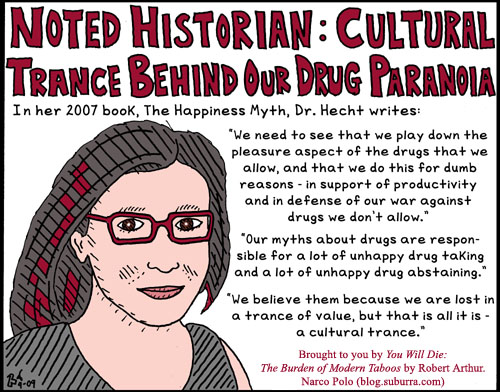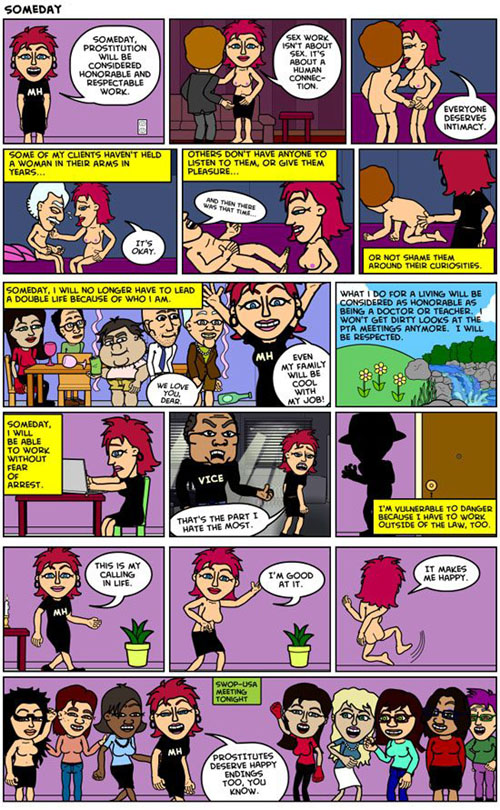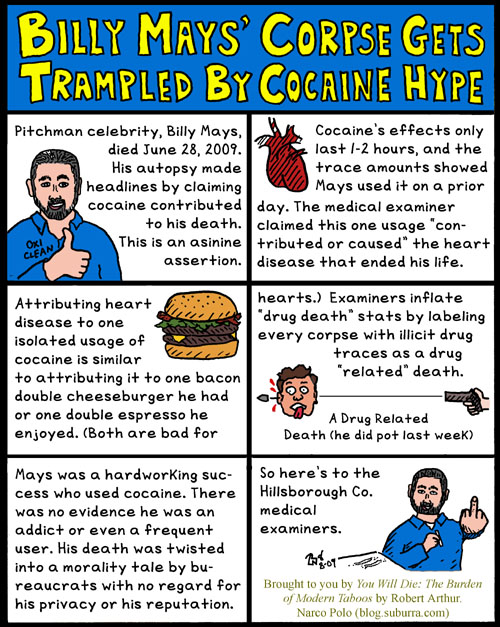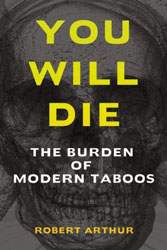Noted Historian: Cultural Trance Behind Our Drug Paranoia
Posted: September 16th, 2009 | Filed under: cocaine, drugs, history, marijuana, opiates | 2 Comments »
In her popular 2007 book, The Happiness Myth: Why What We Think Is Wrong, historian Jennifer Michael Hecht calls our current demonization of drugs a “cultural trance.” (p. 71) Just like past irrational attitudes the modern view of drugs may eventually reveal itself as, “bossy, shaming, controlling nonsense.” (p. 2)
People follow the conventional wisdom of their era in pursuing happiness. Hecht points out that experts have been proven wrong throughout history and that there is no reason to believe the current batch will fare any better. She reveals numerous “nonsensical cultural assumptions” about drugs, the primary one being that drug induced happiness is inferior to sober happiness. (p. 7)
It wasn’t until the early 20th century that pleasure via drugs was characterized as “naughty.” All cultures have had favorite chemicals to feel better. (The Bible repeatedly advocates using alcohol for joy.) This history has been whitewashed in America. For example, few know that marijuana has been smoked from braziers in Europe since the onset of agriculture roughly 5,000 years ago or that the French Renaissance literary character, the giant Pantagruel, was named after marijuana and smoked it constantly.
Hecht dares to point out that even addiction can be pleasurable. Much of America is addicted to caffeine and looks forward to their “boosts.” They do not suffer because caffeine is freely available. In other cultures and times opiates and cocaine were used in a similarly benign fashion, i.e. laudanum in the West and coca chewing in South America.
Hecht explains how easily our drug attitudes could have been formed differently and how arbitrary our drug categories are. If coca leaves transported easier, chewing may have caught on in Europe and there may have been more resistance to the cocaine prohibitionists. Likewise if caffeine is “chemically goosed” to provide an intense high, caffeine might become a target of the drug war. (p. 92)
In Native American culture there were periodic festivals involving dancing and the closely supervised administration of drugs which brought about spiritual revelation and euphoria. Teenagers participated. A longing for these experiences still exists as, “many people, especially young people, say they are never happier than when they are a little high and listening to live music, or dancing.” (p. 118) However, in current American culture this behavior has been criminalized due to our “pharmacological Calvinism” so young adults who persist must get their substances from the black market and consume them without supervision. (p. 119)
Hecht lists circumstances in which she suggests one consider using drugs. Some of them are:
1. If you long for a break from your “symptoms” or merely from your personality.
2. If you want to know more about the nature of reality and how the mind creates it.
3. If you want to have an intense communing experience with someone.
4. If you want to have a good time on a given evening.
5. If you want to dance and be social, but you are too inhibited.
Hecht cautions people against using illegal drugs in the current environment and recognizes their dangers. However, she writes that life is full of risky behaviors, e.g. driving cars, mountain climbing, living a sedentary life. The risks and benefits are balanced when deciding whether to regulate or criminalize these activities, but with drugs modern policy makers completely discount the happiness that drugs bring.
Modern pundits who claim we are dosing ourselves too freely are not speaking with historical knowledge or philosophical sense. Keeping your mind in only one place is not a very assertive way to relate to life, to search it for happiness, or for truth. (p. 127)
The Happiness Myth: Why What We Think Is Wrong also covers false cultural assumptions in the areas of wisdom, money, bodies, and celebration.




